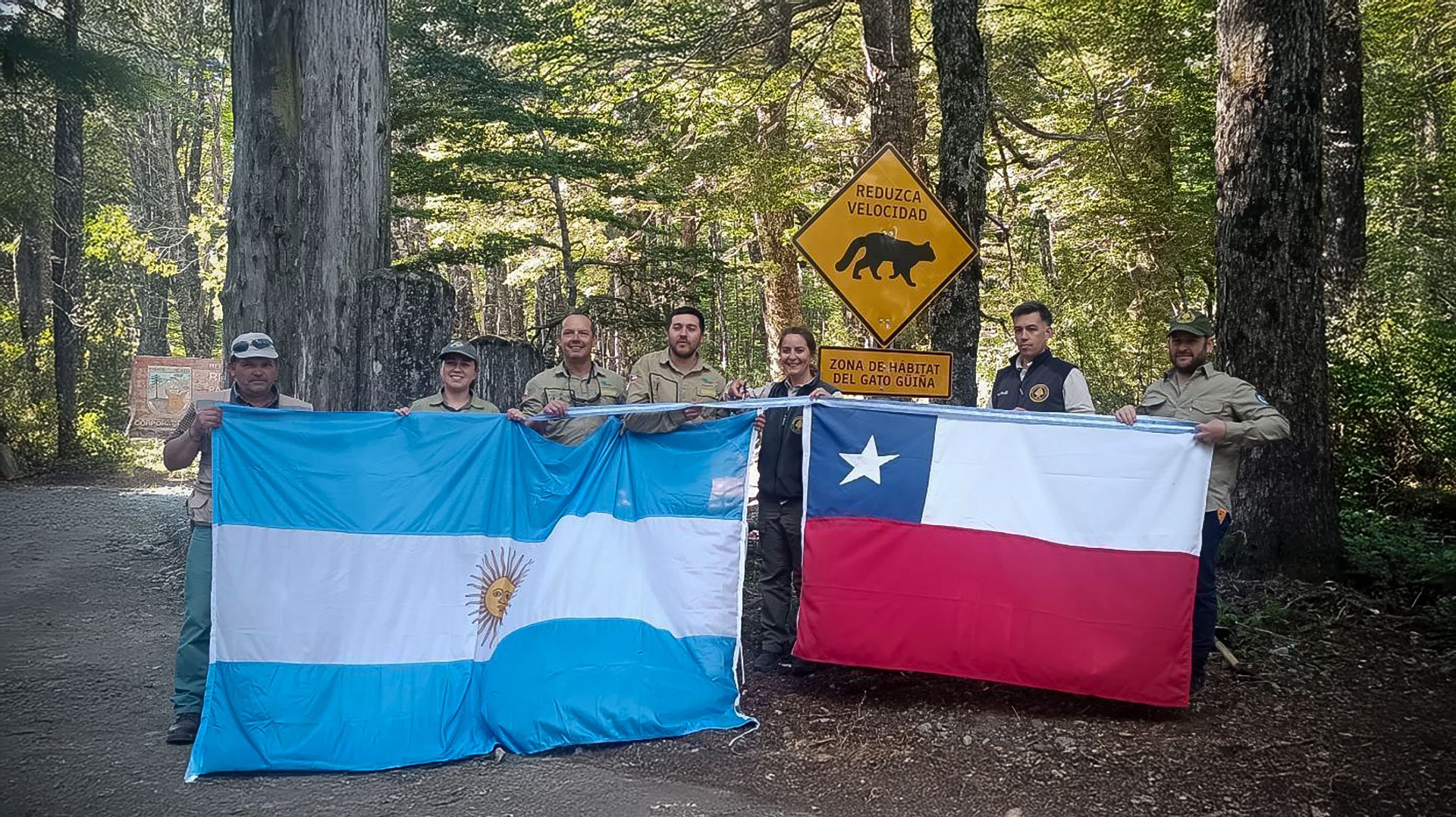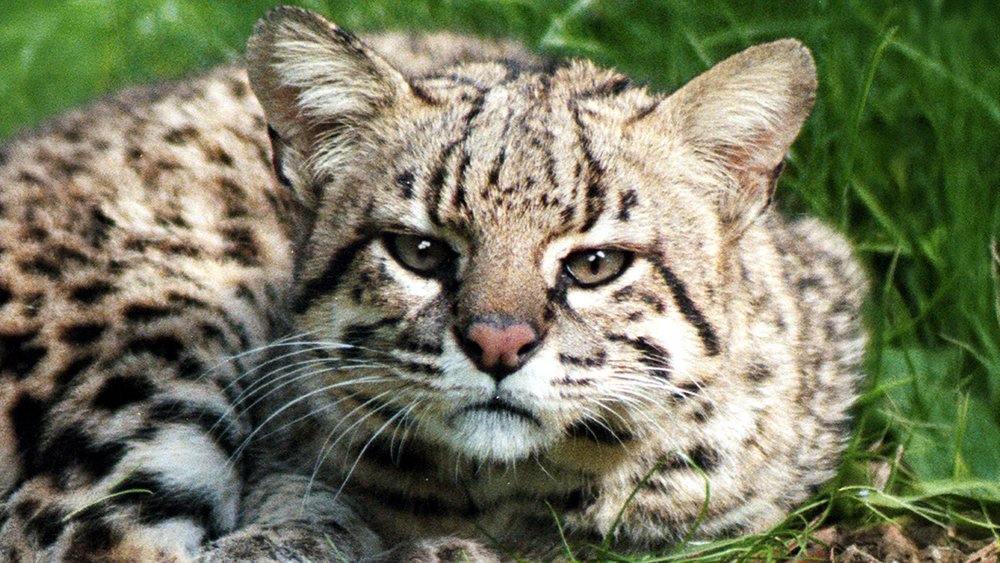Geoffroy's Cat
Geoffroy's Cat
Common Name: Geoffroy’s Cat
Kingdom: Animalia
Phylum: Chordata (Vertebrata)
Class: Mammalia
Order: Carnivora
Family: Felidae
Genus: Felinae (Oncifelis)
Species: geoffroyi
Misc: Geoffroy’s cats are strong swimmers that regularly enter the water, and have been recorded frequently swimming fast flowing rivers 100 feet wide. Geoffroy’s cats were named after the French naturalist Geoffroy St. Hilaire.
Sub-species:
F.g. geoffroyi
F.g. salinarum (once believed to be a separate species)
F.g. paraguae
F.g. euxantha
Size and Appearance: One of the small cats about which little is known, this cat has a uniformly patterned coat of small black spots of nearly equal size and spacing. The ground color tends to be more of an ochre color in the northern part of their range to a gray in the southern part. Black (melanistic) individuals are common. Males weigh an average of 10 pounds, and females average 8.
Habitat: They occupy a wide variety of habitats, from the pampas grasslands and arid Chaco shrub and woodlands, up to alpine saline deserts. It is absent from tropical rain forests, broad-leaved forests, and open areas. It occupies the same areas as the Pampas Cat, but the Geoffroy’s sticks to dense ground cover which separates the two ecologically.
Distribution: Argentina, Bolivia, Brazil, Chile, Paraguay, and Uruguay.
Reproduction and Offspring: After a gestation of approximately 72-78 days, females produce a litter of 2 (sometimes 3) kittens. They weigh 2.25-3.5 ounces at birth and will begin to walk between 14-21 days old. They are weaned around 3 months of age, and attain sexual maturity around 18 months for females and 24 months for males (in captivity).
At Big Cat Rescue, Geoffroy’s cats have lived over 20 years, compared to 14 being the oldest elsewhere.
Social System and Communication: They are solitary in the wild, and the females will have overlapping home ranges, males however, will not. They are nocturnal and partially arboreal. The males and females will come together for mating. Hear our purrs, hisses, snarls, calls, and growl sounds HERE
Hunting and Diet: The primary diet of this cat consists of rodents, hares, fish, reptiles, birds, and various small mammals.
Principal Threats: The biggest threat has been the exploitation of its pelt for the fur trade, which sadly still exists. The good news is that commercial hunting has virtually ceased, and the kills from which the pelts are derived are from cats killed as pests and livestock predators. This has helped reduce the numbers from what was an average of 55,000 animals per year to considerably less (exact figures not known). Deforestation from human encroachment is also a problem facing this little cat, but since so little is known of its habits, the extent of the damage is unknown at this time.
Status: CITES: Appendix I. IUCN: Not listed.
Felid TAG recommendation: Geoffroy's cat (Oncifelis geoffroyi). Once common in zoos and the private sector, this easily kept species has disappeared from both types of holders because of poor management. Due to its Appendix I status under CITES, additional specimens from range countries are not easily obtained. Without new founders, the extant population is nonviable. The TAG recommends Phase-Out for this species. At the Annual AZA Conference (September 1999), the following four species were recommended by the Felid TAG to be 'down-graded' to a Phase-Out populations. For the jaguarundi, tigrina, and Geoffroy's cat, these recommendations were made because of limited space available, the limited number of founders in these populations, and limited potential for acquiring additional founders.
How rare is this cat ? The International Species Information Service lists 54 worldwide, with 52 being in the U.S.
Information reprinted With Permission from the IUCN Wild Cats Book.
Most people are not intimidated by the Geoffroy's Cat's size, but they should be. They have not ever been fully domesticated, and are a truly untrustworthy wild cat.
See Conservation Work Funded By Big Cat Rescue here:
All conservation insitu work: https://bigcatrescue.org/insitu/







